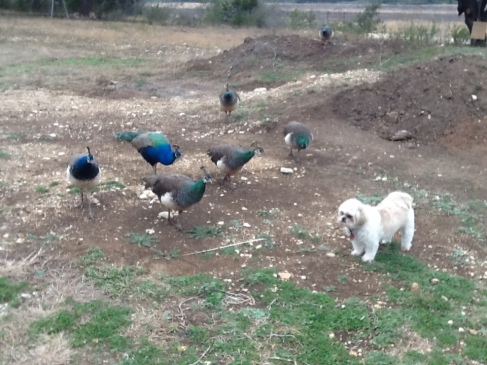 Charming Brenham Texas–officially charming that is, and almost deadly with charm, or deadening, somehow with its gift shops and bakeries and antique stores and gift shops and more gift shops and (did I mention?) gift shops–is a fine place to stop for coffee and ice cream and a bathroom break when heading west from Houston toward Austin, or from Magnolia to Boerne, or when just driving around Texas during bluebonnet season. (And oh yes, a lot of those knickknacks in the gift shops involve bluebonnets.)
Charming Brenham Texas–officially charming that is, and almost deadly with charm, or deadening, somehow with its gift shops and bakeries and antique stores and gift shops and more gift shops and (did I mention?) gift shops–is a fine place to stop for coffee and ice cream and a bathroom break when heading west from Houston toward Austin, or from Magnolia to Boerne, or when just driving around Texas during bluebonnet season. (And oh yes, a lot of those knickknacks in the gift shops involve bluebonnets.)
But honestly, it’s hard not to shop here. And yes, occasionally I’ve been determined to find some seriously super Texan souvenirs–though my husband once bought a pair of cowboy boots that got worn exactly twice, I’ve given some cute little tea towels away that are used to this day–but this week when driving to Boerne and Hondo and stopping in Brenham for coffee I remembered pecans, that great southern staple so loved here and about which I’d read something recently — but what was it?
Pecans, I knew, would be sold in Brenham.
Naturally, I didn’t want the pecans from the officially charming pecan places, so it took some effort. A little. First I asked at the charming cafe where we’d gotten our excellent coffee and our mediocre banana bread and got the names of a couple places right on the square. (The great thing about the charming cafe? It wasn’t so charming on closer inspection. Back toward the bathrooms there was a massive room that smelled of cigarette smoke and held about four pool tables.)
We decided to try one but we were not feeling it, really, not sure about it. On our way back to the car we saw the post lady and as I stared, thinking of how much she would know vs. how willing she would be to impart it to a couple of obvious tourists, she greeted us with a loud hello. (This really is my state.) Turned out–big surprise–she knows of a place where her parents bring their pecans to be cracked when they have a big season, too big to handle on their own, and it’s one block over then right across the railroad tracks and on the right on S. Park Street. And holy Jesus, there we meet Betty whose been in the biz with her husband since 1939 when he wanted to do something on his own and not rely on the family money and get all tangled up in the family purse strings and so got into a bunch of businesses including this one, right here where we are standing, in an old warehouse for shelling and wholesaling pecans. Betty told us that this is the first year since 1916, when her husband was born, that there were no local pecans. Which reminded me then of what I’d read, that this had been a bad year for pecans and the Chinese had suddenly developed a taste for them and the result was a terrible shortage.
Some years we sell over a hundred thousand pounds of pecans, but not this year, she said.
I did not take a picture of her. It would have been too embarrassing all around.
Betty wore comfortable shoes and a simple white shirt and polyester stretch-waist pants and carried around a cracker & sheller like some Buddhists bear their beads or more actively, like a boy and a knife, or more purposeful, like a dealer and a deck of cards, a mason and the flat metal paddle that spreads the mortar, there’s work to do and she’s 80-some-odd and why not work, she says, why not when her friends retire and pretty soon they get all stiff and she’s heard about more digestive troubles than anyone ever should….not her. No. She’s working. She cracked a few so we could try them, taste the difference, scolding my husband mildly for eating them too close together, apologizing for not having wine to sip in between to clear the palate. She charmed the hell out of us, officially. She rang us up for three of the four kinds of pecans they were selling that morning, the Elliots in halves and the Pawnees in pieces and something else still in its shell and then she went on to the next thing, some problem with an order, discussing it with her son, ready to take the call and we had to go and all I got was this shot of the warehouse and thank goodness I know where to go for pecans whenever I’m in Brenham, Texas.










